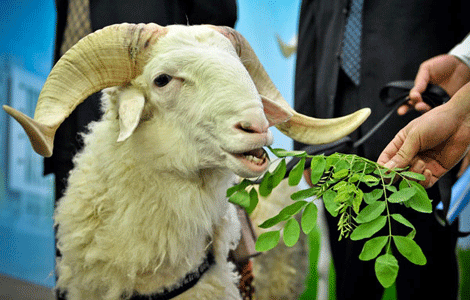
North America targeted for arts as Beijing firm takes on global giants
A major Chinese auction house is seeking Asian treasure in North America, as China's art and antiques market shows it still has life despite a downturn.
"We want to get more items to bring back to China for auction,'' said Richard He, chief North America representative of China Guardian Auctions.
Chinese auction houses offer better value than those in New York, he said.
The second-biggest auctioneer on the Chinese mainland will try to collect treasures, such as Chinese sculptures, oil paintings, calligraphy, handicrafts, books and ancient coins, during visits to Toronto, New York and San Francisco in the coming weeks.
The tour continues Beijing-based Guardian's efforts to take on its larger domestic rival, Beijing Poly International Auction, as well as the dominant art-auction houses, Christie's and Sotheby's, for a bigger slice of the global art market.
In October, Guardian began challenging the big players with a Hong Kong auction that took a mainland auctioneer outside the mainland for the first time. After the auction generated sales of HK$455 million ($59 million), China Guardian said it would begin conducting auctions each spring and fall in the city.
The value of works sold at auction in China surged for three years up to 2012. The country passed the US as the world's biggest art and antiques market in 2011, capturing an estimated 30 percent of the global total, up from 23 percent a year earlier.
But the Chinese market stumbled last year. The cooling economy, alleged sales of inauthentic works and other factors took a toll. In 2012, total sales at China Guardian and Poly Auction more than halved. Meanwhile, sales at Sotheby's and Christie's in Hong Kong also fell, wiping $2.4 billion off the country's art market, Art Newspaper reported.
Despite the downturn, the market remained resilient. Last year saw Guardian auction 22,695 items in four sales, generating a nation-leading 51.62 billion yuan ($8.19 billion) in trade, the auction house said. That total included the sale of Chinese painter Li Keran's landscape, Shao Shan, for 1.24 billion yuan.
In October 2011, Guardian's vice-president and director, Kou Qin, told BlouinArtInfo that the auction house's plan to open a New York office was aimed at gaining a better understanding of how Sotheby's and Christie's worked. Guardian opened the Manhattan office two months later.
Considering the way the market has grown in the US, Kou said, "the US can be an example for the future Chinese market".
"The US art market has such influence and credibility," Kou said. In China, however, "collectors love art but don't have experience," he said. "We are trying to build up the credibility of buyers."
Li Feng, deputy director of Minsheng Art Museum Shanghai, said Chinese collectors prefer to complete their collection on the mainland, to avoid the paperwork involved in taking the works back from overseas.
Concerning the less-than-stellar performance of the Chinese art auction market in 2012, Li said things won't change much in 2013.
But Li said works of real quality will always hold up their value.
"Collectors are always waiting for the really good ones," he said.
Too much importance has been attached to price rather than the artistic value.
"Cultural tradition handed down over years should be the essence of art collection. Investment should be an added value. But at present, it seems that the whole scenario is upside down," he added.
Contact the writers at michaelbarris@chinadailyusa.com and shijing@chinadaily.com.cn
Hu Haidan in New York contributed to this story.







